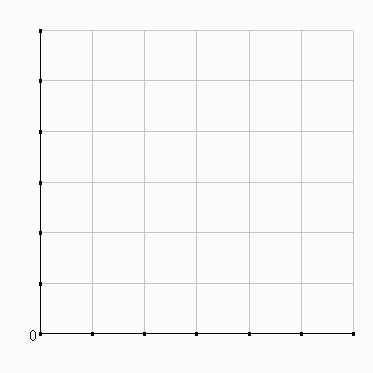| Example: P=8,6, Q=2,3 MR = DTR/DQ = P + Q.DP/DQ
B = revenue lost by selling the rest
of the output for a lower price. |
 |
VI. Market power
Introduction
Focus now is on situations in which markets do not perform as we want them to
Market power: markets are not competitive. The
problem in this case is that we don't reach the competitive market price and output, even
though that is where we want to be.
Market failure: the competitive market price and output is not where we
want to be–it's not optimal.
In this section we cover market power.
Product markets:
D: universally perfectly competitive (pc)
S: sometimes not true
Resource markets: Both D and S not always PC
A. Demand for firms with market power
Market power means the power to influence price by varying output
Key consequence of market power: Firms see downward
sloping D:
Up Q --> Dn P
=> firms are price makers or price searchers
instead of price takers
1. Demand and marginal revenue
Worksheet: Demand conditions for firms with market power
--top part
? What does MR tell us?
MR is important because firms use it to maximize profits
? Conceputally, why is MR<P for a firm with simple market power?
Recall in general, P = P(Q)
A firm with the entire demand curve to itself can use
this relationship:
If I sell Q0, each unit will fetch me P.
If I sell Q0+1, each unit will fetch me P'.
What will happen to my TR?
I.e., what will my MR be?
| Example: P=8,6, Q=2,3 MR = DTR/DQ = P + Q.DP/DQ
B = revenue lost by selling the rest
of the output for a lower price. |
 |
For firms with market power, MR < P.
D and MR tell us two different things.
For any Qo:
(1) D tells us what price all Qo units will sell for.
(2) MR tells us the net contribution of unit Qo to TR.
Another way to think of D: D=firm's AR.
D = AR and it is falling
? What must be true about the relationship
between MR and AR if AR is falling?
2. P, MR and elasticity (e)
Handout: Price, marginal revenue and elasticity
Recall
(1) MR = P + Q.DP/DQ
(2) |e| = - (DQ/DP).(P/Q)
(1) => MR = P.[1 + (DP/DQ).(Q/P)]
(2) => (DP/DQ).(Q/P) = -1/|e|
Substituting -1/|e| into (1) =>
MR = P(1 - 1/|e|) =>
| MR = P. | |e| - 1 ------- |e| |
|
Note 1: MR is always < or = P
= P if e = infinity, as
for PC firm
Note 2: MR > 0 iff e>1
Recall: MR tells us what
is happening to TR:
Selling more raises TR if e>1
Selling less raises TR if e<1
Worksheet: Demand conditions for firms with market power
--bottom part
Note1: monopolist gets industry to self: therefore, efirm = eindustry
Note2: In general, a firm gets less than the entire
industry, so efirm > eindustry
(competitors' Q is a good substitute)
Sum up: market power
=> D slopes down
=> MR no longer = P; MR<P instead
The problem:
(1) Profit maximization => MR=MC
(2) Efficiency => P=MC
If P does not = MR, we can't be sure we have efficiency